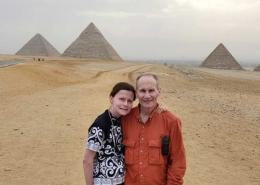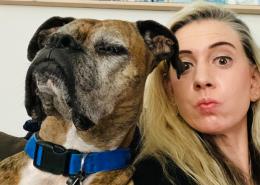The Winding Road to Discovery: How Unexpected Data Led to Novel Insights into Cancer Treatment

The path to discovery rarely follows a straight line.
In 2015, as a post-doc researcher at Pfizer, Michael Arensman got an early lesson in this maxim. At the time, he set out to study the protein xCT, a transporter that carries nutrients into cells, and its role in T-cell proliferation. As a young scientist, he was eager to have his results published and contribute to the field of immunology.
But about a year into the study, his hypothesis failed. He took his unexpected results, however, and pivoted his research to make novel discoveries about xCT’s role in tumor survival, which ultimately could lead to a new cancer therapy. Now a senior scientist at Pfizer, Arensman’s xCT study was recently published in the Proceedings of the National Academy of Sciences.
For Arensman, it illustrates the circuitous nature of scientific research. “When you read a scientific paper, the authors usually describe a straightforward path as to how the project materialized,” says Arensman, who is based at Pfizer’s Pearl River, N.Y. research site. “But in reality, our stories have so many twists and turns.”
Negative data
Arensman’s initial hypothesis was built upon existing research done in vitro, in petri dishes, showing that xCT’s transport of the amino acid cystine was crucial for cell survival. Scientists had hoped that the amino acid carrier could be used as a potential drug target to stop T-cell proliferation in autoimmune disorders. But when he replicated this study in vivo, in mouse models, he got unexpected results: the cells from the knockout mice — meaning their xCT had been genetically deleted — were able to proliferate at the same rate as the cells from normal mice.
For scientists, getting this “negative data,” meaning there’s no difference between the experimental arm and control arm, can be disappointing because it leaves them with limited chances of getting published. “I was frustrated because I expected there to be a difference,” says Arensman. “I kept doing it over and again.”





